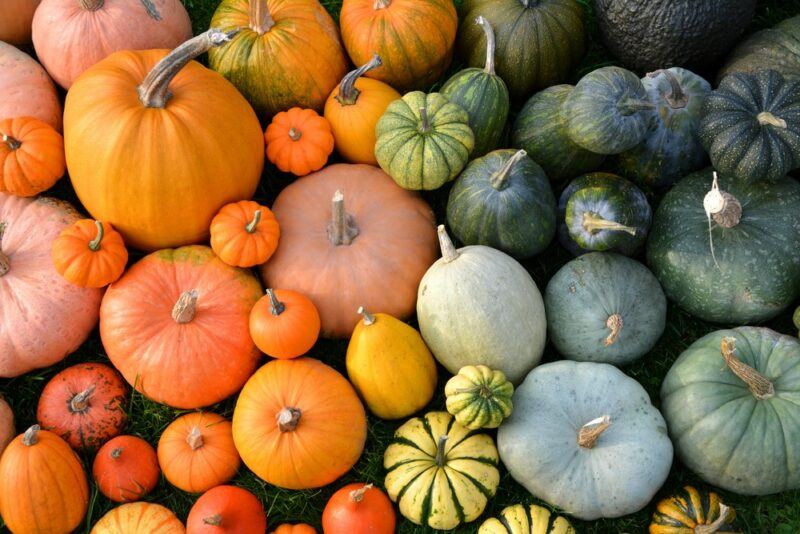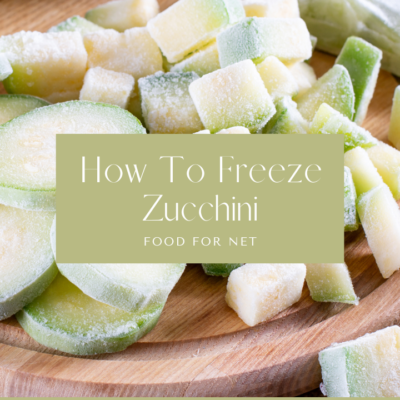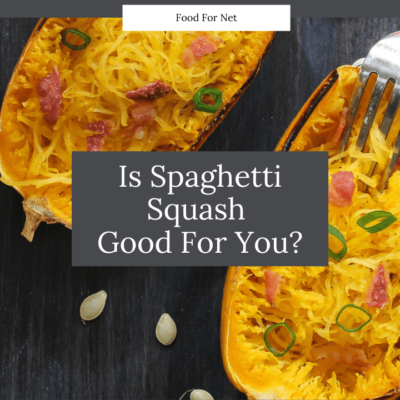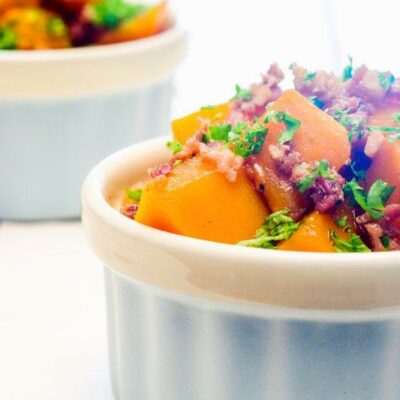
Pumpkin is the classic fall vegetable, the one that many of us start to crave as the weather cools down. You see pumpkin turn up in countless recipes as well, including smoothies, pumpkin spice lattes, pumpkin pies, soup, and cookies, to name just a few. There’s little doubt that the flavor is amazing then, but what about the health effects? Is pumpkin good for you?
To answer that question, we’re going to take a close look at the ways that pumpkin can help you and where it’s harmful instead. After all, no food is entirely good or bad. The trick is to find the strengths and weaknesses of each part of your diet, then make wise decisions about what you’re eating each day.
Is Pumpkin Good For You?
- Types Of Pumpkin
- Pumpkin Nutrition
- Benefits Of Pumpkin
- How Pumpkin Could Be Harmful
- Is Pumpkin Keto Friendly?
- Pumpkin And Diabetes
- Is Canned Pumpkin Puree Healthy?
- Final Thoughts
Types Of Pumpkin

When you think about pumpkin, you’re probably bringing to mind the bright orange vegetable that is often carved right before Halloween. Yet, that famous vegetable is just one type of pumpkin. There are many other varieties that we call pumpkins as well, including the following.
- Jack-Be-Little. Small palm-size pumpkins that are mottled with orange and green and become progressively more orange as they ripen.
- Jarrahdale. This is an Australian heirloom pumpkin that often has gray to green-blue skin.
- Cotton Candy. These white pumpkins even have white flesh, making them a fun choice for Halloween.
- Butternut Squash. This winter squash is often seen as a pumpkin, although it’s a little sweeter and can be found most of the way through the year. The sweet nuttiness of butternut squash makes it a versatile ingredient, one that many chefs take full advantage of.
- Dumpling Pumpkins. These small pumpkins tend to be beige and green. The small size makes them an excellent choice for baking and stuffing.
All these pumpkins come from the genus Cucurbita and most are from the species Cucurbita maxima or Cucurbita pepo. That selection of pumpkins, however, is just a small selection of all the ones that are out there. There are plenty of others too, in an endless array of different colors, shapes, and sizes. Some are regularly used for cooking, while others are primarily ornamental.
There’s no best type. Half the fun is trying out new varieties and experimenting to see which ones you like the most.
Pumpkin Nutrition
There are some nutritional differences depending on the type of pumpkin you choose. There are plenty of similarities too, so we can use a single nutritional profile as a baseline. For a cup of regular bright orange pumpkin (boiled, drained, then mashed), the nutritional profile is this:
- Calories: 49
- Carbs: 12 grams
- Fiber: 2.7 grams
- Sugars: 2.5 grams
- Fat: 0.2 grams
- Protein: 1.8 grams
- Vitamin A: 245% of your daily needs
- Vitamin C: 19% of your daily needs
- Potassium: 16% of your daily needs
- Vitamin E: 10% of your daily needs
- Iron: 8% of your daily needs
There are some other interesting nutrients present too, including magnesium, folate, phosphorous, zinc, and even some calcium.
The benefits of these nutrients almost go without saying, as vitamins and minerals are critical in so many parts of our bodies. They help us to grow, they make sure reactions progress as they should, and they keep us functioning well.
Being deficient in any of the essential vitamins and minerals can lead to a variety of side effects, some mild and some severe. Long term deficiency may put you at serious risk.
As such, it’s incredibly important to hit your nutrient targets each day. Ingredients like pumpkin are a powerful (and delicious!) way to do just that.
Benefits Of Pumpkin

Exceptional For Antioxidants
It’s almost impossible to talk about a vegetable like pumpkin without mentioning antioxidants. These compounds still feature on almost every health site, as they’ve been associated with a shocking number of benefits.
To put it simply, antioxidants decrease levels of oxidation in your body. Oxidation itself isn’t a bad thing, but too much of it can easily lead to problems, including damage to cells, organs, or DNA. This type of damage can increase the risk of disease and cause other issues.
Antioxidants don’t fix everything overnight. They do, however, help by lowering oxidative stress and decreasing the risk of serious oxidative damage. This is why it’s so important to have enough antioxidants in your diet.
Pumpkin is a particularly good choice, as it contains potent antioxidants. Beta carotene is one of these, which our body can also convert to vitamin A when needed.
Promotes Heart Health
Pumpkin is also good for your heart, partly because of the potassium it contains, as potassium helps to decrease blood pressure levels. Just be careful with the sodium here, particularly for canned pumpkin, as sodium has the opposite effect and can increase your blood pressure.
The fiber in pumpkin helps here as well, as this is linked to decreased cholesterol levels.
The Vitamin A Content
Because of the beta carotene, pumpkin also provides a decent amount of vitamin A. This vitamin is particularly relevant for your immune system, so it can help your body to fight off infections. Vitamin A has other roles too, like keeping your organs and your eyes healthy.
While vitamin A isn’t uncommon, the amount in pumpkin is seriously amazing. You get more than 200% of your daily needs from a cup of pumpkin.
Don’t worry though, you can’t actually overdose on vitamin A from vegetables like pumpkin. Vitamin A toxicity tends to occur from supplements instead, as supplements contain preformed vitamin A. Pumpkin doesn’t. It contains beta carotene instead, which our bodies must convert into vitamin A. If your vitamin A levels are already high, this conversion is likely to slow down or stop entirely.
One side note though – beta carotene is a red-orange pigment molecule. It’s prevalent in orange-fleshed pumpkins, but there’ll be much less of it if the pumpkin flesh is a different color. As such, orange-fleshed pumpkins are the best choices for vitamin A.
A Decent Source Of Fiber

As we showed earlier, you get a little under 3 grams of fiber in a single cup of mashed pumpkin. This is a decent amount, especially for a serving that only contains 49 calories.
Fiber sounds boring sometimes. There’s always some of it in plant-based foods and we don’t digest it anyway, so what’s there to get excited about?
That attitude might be why many of us aren’t getting as much fiber as we need each day. Doing so can cause countless problems, like increasing the risk of constipation, raising our cholesterol levels, and promoting spikes and dips in our blood sugar levels.
On the other hand, getting enough fiber helps even blood sugar out and makes sure we digest food properly. Not surprisingly, fiber rich diets also promote regular bowel movements and decrease the risk of heart disease, type 2 diabetes, and obesity.
It’s Useful For Weight Loss
Pumpkin is surprisingly powerful for weight loss too, as it contains a decent amount of fiber and even a little protein. This combination means that pumpkin ends up being filling and could even reduce the amount of calories you consume elsewhere.
Plus, pumpkin is mostly water, which makes the calorie content per serving quite low. You’re only getting around 50 calories for a whole cup of pumpkin, making it an easy choice when you’re watching your calorie intake.
Relevant For Age-Related Eye Problems
Pumpkin has some interesting compounds for your eyes, including beta carotene. The combination of beta carotene, vitamin C, and vitamin E is thought to help to keep your eyes healthy.
The combination, along with the compounds lutein and zeaxanthin, has been linked to decreased risk of a condition called age-related macular degeneration. This effect might even be why carrots are often thought to be so amazing for your eye health.
That said, neither carrots nor pumpkins will improve your eyesight or help you to see in the dark.
They’re A Healthy, Whole, Plant-Based Food
Modern society is rife with health challenges, including chronic disease and obesity. Some of these problems are directly associated with modern diets and lifestyles.
As a result, health experts often recommend decreasing intake of saturated fat, red meat, and processed foods. Instead, we should be increasing our intakes of plant-based foods, including fruit, vegetables, legumes, and whole grains.
Pumpkin is perfect here, as it’s an easy-to-find versatile vegetable that pairs well with many other plant-based foods.
How Pumpkin Could Be Harmful

Can Turn Your Skin Yellow
Eating a large amount of beta carotene has an unusual effect – it can start to turn your skin yellow. This strange effect is partly related to how beta carotene is a pigment molecule.
The yellow tinge isn’t a serious problem. It quickly goes away once you drop down your beta carotene consumption and doesn’t appear to cause any health issues.
That said, there’s little research into the effects of high amounts of beta carotene during pregnancy, so pregnant women may want to err on the side of caution and try not to have excessive amounts of vitamin A rich vegetables.
Possible Side Effects From The Fiber
The only other problem with pumpkin is that sometimes that fiber can cause digestive side effects, like making you feel nauseous or causing diarrhea.
Such side effects don’t mean that there’s anything wrong. They simply happen because your body is adjusting to a change in fiber intake.
Thankfully, this won’t happen often with pumpkin, as the amount of fiber per serving isn’t exceptional. Still, if you’re consuming a lot of pumpkin or are having it with fiber rich ingredients, you might notice such side effects.
Taking it slowly with fiber and drinking plenty of water can help to decrease the risk of any side effects.
Is Pumpkin Keto Friendly?
Pumpkin is categorized as a starchy vegetable, which generally makes it a poor choice on a keto diet. However, it’s lower in carbs than most other starchy vegetables, so you can fit it in a keto diet, as long as you’re careful.
Most of the time, this means you won’t be eating pumpkin on its own. You’ll be looking for keto pumpkin recipes instead, as these balance the pumpkin out with low carb ingredients, to give you a reasonable number of net carbs per serving.
Pumpkin And Diabetes
Keto dieters aren’t the only ones who need to be careful with pumpkin. Diabetics need to be as well. In particular, pumpkin is a high glycemic index (GI) food, coming in at 75.
GI isn’t an amazing measurement though, as it ignores common serving sizes. The glycemic load (GL) is more helpful and pumpkin comes in at around 3 here, which is low.
These numbers mean that if you eat a reasonable serving size, perhaps half a cup or so, you shouldn’t see a dramatic blood sugar impact. The effect of pumpkin will be even lower if you include various low GI ingredients as part of your meal.
Interestingly, some studies even suggest that pumpkin might be helpful for diabetics, by decreasing blood sugar levels and improving glucose tolerance. There isn’t much evidence for this effect yet though, so it’s still important to pay attention to your own blood sugar responses.
Is Canned Pumpkin Puree Healthy?

Canned pumpkin is one of the fastest ways to take advantage of pumpkin, as there’s nothing to cut up or cook. However, it might not seem like a healthy choice, as the pumpkin has been through more processing than the fresh version.
While fresh pumpkin is still the best choice, canned pumpkin is packed with many of the same nutrients, including vitamin A and potassium. The trick is to choose your product well. Ideally, you want a can that contains pumpkin puree and few other ingredients.
Be particularly careful with anything called pumpkin pie mix or something similar, as such products often have sugar mixed in. It’s much better to buy unsweetened products, so you can control the amount of sugar that you add into the mix.
Watch out for salt as well. This is another common ingredient and most of us don’t need extra sodium in our diet.
Final Thoughts
Pumpkin is exceptional in many ways, providing plenty of nutrients, antioxidants, and fiber. These features all help to promote your health.
The biggest issue is the carb content. This is high enough that keto dieters and people with diabetes need to be careful with their serving sizes to keep themselves healthy. Still, pumpkin has a strong flavor, so you don’t need a large amount of it to create delicious recipes.
Don’t forget about the pumpkin seeds either. These offer different benefits to pumpkin flesh, but they’re just as good for you. If you’re cooking fresh pumpkin anyway, why not roast the seeds rather than throwing them out?
Frequently Asked Questions
Can You Eat Pumpkin Raw?
While pumpkin is normally cooked, you also eat it raw. However, the texture is tougher and raw pumpkin is more bitter, so not everyone will enjoy it. You may find that you need to either puree or grate raw pumpkin flesh to use it. It’s tough to know whether raw pumpkin is healthier or less healthy than cooked pumpkin. On one hand, some nutrients are lost during cooking, which suggests that raw pumpkin would be the best choice. However, cooking can also increase digestibility and nutrient availability.
Is Pumpkin Good For Weight Loss?
Pumpkin certainly can help you lose weight, as it contains plenty of fiber and nutrients, but remains low in calories. This is an ideal combination of features when you’re trying to drop pounds. Pumpkin is also an excellent way to make a meal more satisfying without adding many extra calories.
Can You Eat Canned Pumpkin Raw?
Canned pumpkin can easily be eaten straight from the can, but this doesn’t mean you’re eating it raw. Instead, most canned pumpkin products are steamed before they’re canned, so the pumpkin is already cooked.
Can Pumpkin Be Frozen?
Pumpkins can easily be frozen. The best way is to cut the pumpkin into pieces and store these on parchment paper while they freeze. After the pumpkin has frozen, you can store the pieces in freezer bags. Once frozen, the pumpkin should last around three months.
Blanching the pumpkin in hot water before freezing it helps too. This gives you a better texture than if you just freeze the pumpkin pieces directly.
You don’t need to stick to raw pumpkin. Cooked pumpkin puree can be frozen as well. This is useful if you regularly add pumpkin puree to your meals.
Are Pumpkins Berries?
The botanical definition defines berries as simple and fleshy fruit that contains many seeds. Under this definition, yes, pumpkins are berries, as are many other fruits, like bananas, tomatoes, and cucumbers.
Of course, when we talk about berries, we’re not normally using the botanical definition (which is a good thing, as strawberries and raspberries aren’t even botanical berries). Instead, the term berries is normally used in the culinary sense. And, from the culinary perspective, pumpkins definitely aren’t berries.








 Is Lime Juice Good For You?
Is Lime Juice Good For You?
Leave a Reply